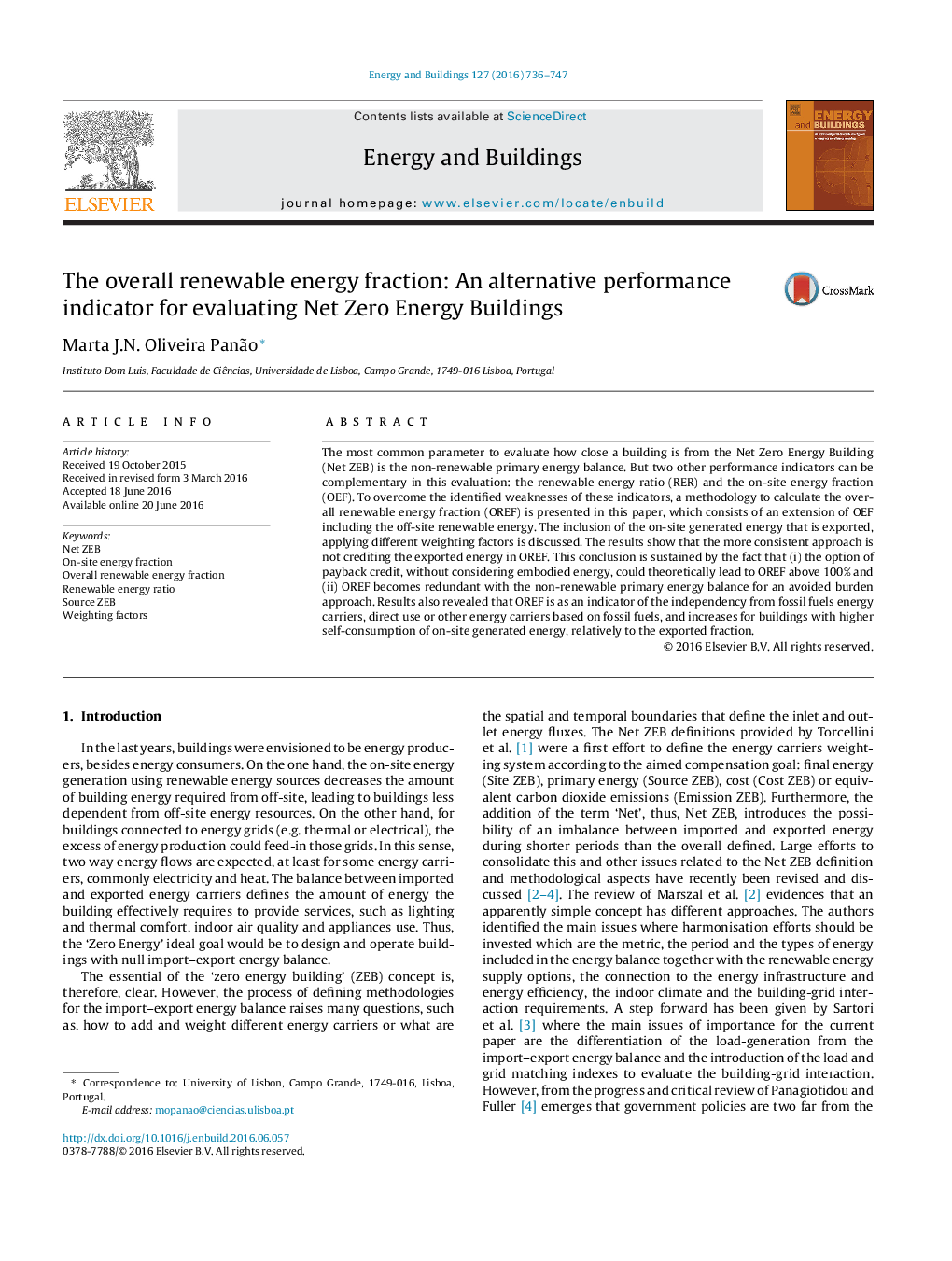| کد مقاله | کد نشریه | سال انتشار | مقاله انگلیسی | نسخه تمام متن |
|---|---|---|---|---|
| 262020 | 504007 | 2016 | 12 صفحه PDF | دانلود رایگان |
• An alternative performance indicator for evaluating Net Zero Energy Buildings is presented.
• The overall renewable energy fraction (OREF) accounts for on-site and off-site renewable energy.
• OREF is as an indicator of the independency from fossil fuels energy carriers.
• Three approaches for crediting exported energy are discussed: no credit, payback and avoided burden.
• The more consistent approach is not crediting the exported energy.
The most common parameter to evaluate how close a building is from the Net Zero Energy Building (Net ZEB) is the non-renewable primary energy balance. But two other performance indicators can be complementary in this evaluation: the renewable energy ratio (RER) and the on-site energy fraction (OEF). To overcome the identified weaknesses of these indicators, a methodology to calculate the overall renewable energy fraction (OREF) is presented in this paper, which consists of an extension of OEF including the off-site renewable energy. The inclusion of the on-site generated energy that is exported, applying different weighting factors is discussed. The results show that the more consistent approach is not crediting the exported energy in OREF. This conclusion is sustained by the fact that (i) the option of payback credit, without considering embodied energy, could theoretically lead to OREF above 100% and (ii) OREF becomes redundant with the non-renewable primary energy balance for an avoided burden approach. Results also revealed that OREF is as an indicator of the independency from fossil fuels energy carriers, direct use or other energy carriers based on fossil fuels, and increases for buildings with higher self-consumption of on-site generated energy, relatively to the exported fraction.
Journal: Energy and Buildings - Volume 127, 1 September 2016, Pages 736–747
